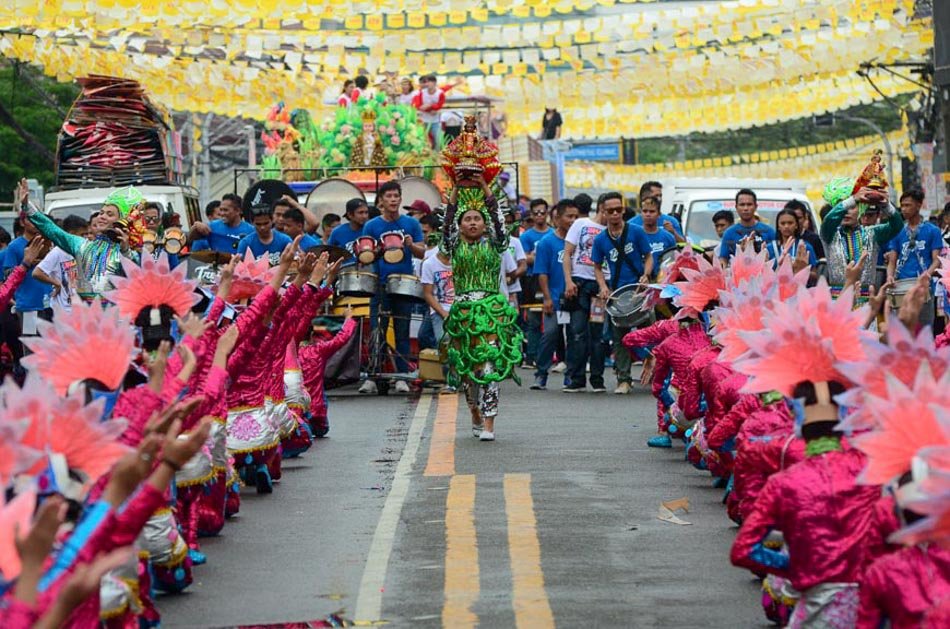The FIESTAS Of The Philippines
Did you know the culturally rich Philippines has over 100 Fiestas (Festivals) annually? Each city or province has a local fiesta. Being a very religious centered country, a fiesta is usually about the celebration of that city or province’s patron saint. While “fiesta season” spans throughout the year, it’s safe to say that there is at least one major festival happening throughout the country at any given week. With majority of those festivals originating from pre-colonial traditions in local cities and communities or rooted in Christianity from the Spanish Colonial Era.
Here are some of our country’s biggest fiestas:
Sinulog Fiesta
A religious festival in Cebu held every January. The origin of the festival was in celebration of one of the country’s most famous historic relics: the Santo Niño de Cebú. This was the statue of the baby Jesus that was handed to the Rajah Humabon of Cebu by the Portuguese explorer Ferdinand Magellan in 1521.
Sinulog comes from the Cebuano word “sulog” which means “like water current movement” which depicts the forward-backward step of Sinulog dance.
Ati-Atihan Fiesta
Held in Aklan in honor of the Santo Niño and is called as the Mother of All Philippine Festivals.
Ati-Atihan Festival meaning is “to be like Atis or Aetas.
It originated as a pagan celebration to for the Barter of Panay, where the Aeta accepted gifts from chieftains called Datu, who fled with their families to escape a tyrannical ruler, in exchange for being allowed to dwell in the Aeta’s lands. They celebrated with dancing and music, with the Borneans having painted their bodies with soot to show their gratefulness and camaraderie with the Aeta who had dark skin. Later on, the festivity was given a different meaning by the church by celebrating the acceptance of Christianity, as symbolized by carrying an image of the Holy Child or Infant Jesus during the procession.
Pahiyas Fiesta
A very colorful Philippines festivals held in Lucban, Quezon with free food. The word ‘pahiyas’ was derived from the word ‘payas’, which means decoration or to decorate.
The Fiesta originated during the 15th century, when farmers used to offer their harvests at the foot of Mount Banahaw. Over time, they brought their farm produce at the church in honor of the town’s patron saint – St. Isidore the Laborer, who is the patron saint of farmers, laborers and peasants. Farmers would bring their harvest to the town church during that time, and the parish priest would bless them as a gesture of thanking the Lord for their abundant harvest. However, as time passed, the chapel was unable to accommodate all harvests. The harvests were subsequently agreed to be displayed in the farmers' homes instead. As a result, the parish priest would tour about the neighborhood blessing people's harvests.
Higantes Fiesta
A parade of giant paper mache along with the street perfomances held in Angono, Rizal. The giants are designed to express a person’s character or a unique idea. According to the locals, this practice began when locals in Angono created a dummy to portray a mean landlord who was best recognized by his foul mannerisms and imposing height.
Apart from exemplifying the artistic talent in the Angono, the festival also places a strong emphasis on the importance of recycling material and consequently, conserving the environment. As a result of this technique, also known as creative recycling.
T’Nalak Fiesta
In celebration of their founding and a way to promote and preserve South Cotabato’s cultural heritage.
The origin of the festival came from “t’nalak,” a colorful abaca cloth. The design of the cloth is unique and “dreamed up” by the person who creates it. That’s why the province is known as “The Land of the Dreamweavers.” The T’nalak fabric serves as the festival icon because it symbolizes the blending of the culture, strength, and unity of the various ethnic groups living in the province.
We also listed down fiestas happening each month so that you can plan it in your next trip. These can include but not limited to parades, theatrical plays, trade fairs, exhibits, concerts, holly masses and processions, pageants, games and contests, street performances, and more. Swipe through to see the entire year’s calendar.
YOU MIGHT LIKE TO READ MORE ABOUT





















Seventeen‑year‑old Pedro “Dro” Fernández made a splash in Barcelona’s first preseason match, scoring his debut goal in their 3–1 win over Vissel Kobe in Japan on July 27, 2025
Read More